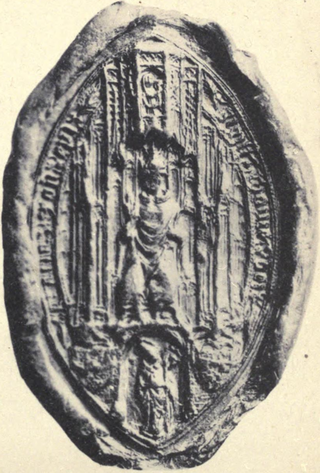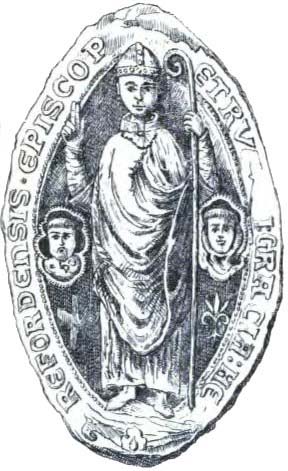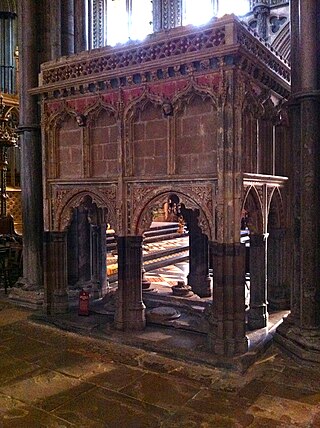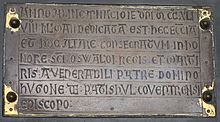William Whittlesey was a Bishop of Rochester, then Bishop of Worcester, then finally Archbishop of Canterbury. He also served as Master of Peterhouse, Cambridge.
Simon de Langham was an English clergyman who was Archbishop of Canterbury and a cardinal.
Michael Northburgh, otherwise Michael de Northburgh (Northborough), was the Bishop of London between 1354 and his death in 1361. He was the nephew of Roger Northburgh, Bishop of Coventry and Lichfield.
Ralph Neville was a medieval clergyman and politician who served as Bishop of Chichester and Lord Chancellor of England. Neville first appears in the historical record in 1207 in the service of King John, and remained in royal service throughout the rest of his life. By 1213 Neville had custody of the Great Seal of England, although he was not named chancellor, the office responsible for the seal, until 1226. He was rewarded with the bishopric of Chichester in 1222. Although he was also briefly Archbishop-elect of Canterbury and Bishop-elect of Winchester, both elections were set aside, or quashed, and he held neither office.

Thomas de Brantingham was an English clergyman who served as Lord Treasurer to Edward III and on two occasions to Richard II, and as bishop of Exeter from 1370 until his death. De Brantingham was a member of the Brantingham family of North East England.

Peter of Aigueblanche was a medieval Bishop of Hereford. A nobleman from Savoy, he came to England as part of the party accompanying King Henry III's bride Eleanor of Provence. He entered the royal service, becoming bishop in 1241. He then served the king for a number of years as a diplomat, helping to arrange the marriage of Prince Edward. Peter became embroiled in King Henry's attempts to acquire the kingdom of Sicily, and Peter's efforts to raise money towards that goal brought condemnation from the clergy and barons of England. When the barons began to revolt against King Henry in the late 1250s and early 1260s, Peter was attacked and his lands and property pillaged. He was arrested briefly in 1263 by the barons, before being mostly restored to his lands after the Battle of Evesham.
Nicholas Farnham was a medieval Bishop of Durham.
Simon of Wells was a medieval Bishop of Chichester.
Peter was a medieval cleric. He became Bishop of Lichfield in 1072, then his title changed to Bishop of Chester when the see was moved in 1075.
Richard Peche was a medieval Bishop of Lichfield.
Geoffrey de Muschamp was a medieval Bishop of Coventry.
William de Cornhill was a medieval Bishop of Coventry.
Alexander de Stavenby was a medieval Bishop of Coventry and Lichfield.
Roger Weseham was an English medieval Bishop of Coventry and Lichfield.

John Hotham was a medieval Chancellor of the Exchequer, Lord High Treasurer, Lord Chancellor and Bishop of Ely. He was also the effective Governor of Ireland for a time.

John Bokyngham was a medieval treasury official and Bishop of Lincoln.
William of Sainte-Mère-Église was a medieval Bishop of London.
William de Raley was a medieval judge, administrator and bishop. Most historians now believe that he was the author of the great law book Bracton.

Benedict of Sausetun was a medieval Bishop of Rochester.
John Sandale was a Gascon medieval Lord High Treasurer, Lord Chancellor and Bishop of Winchester.






